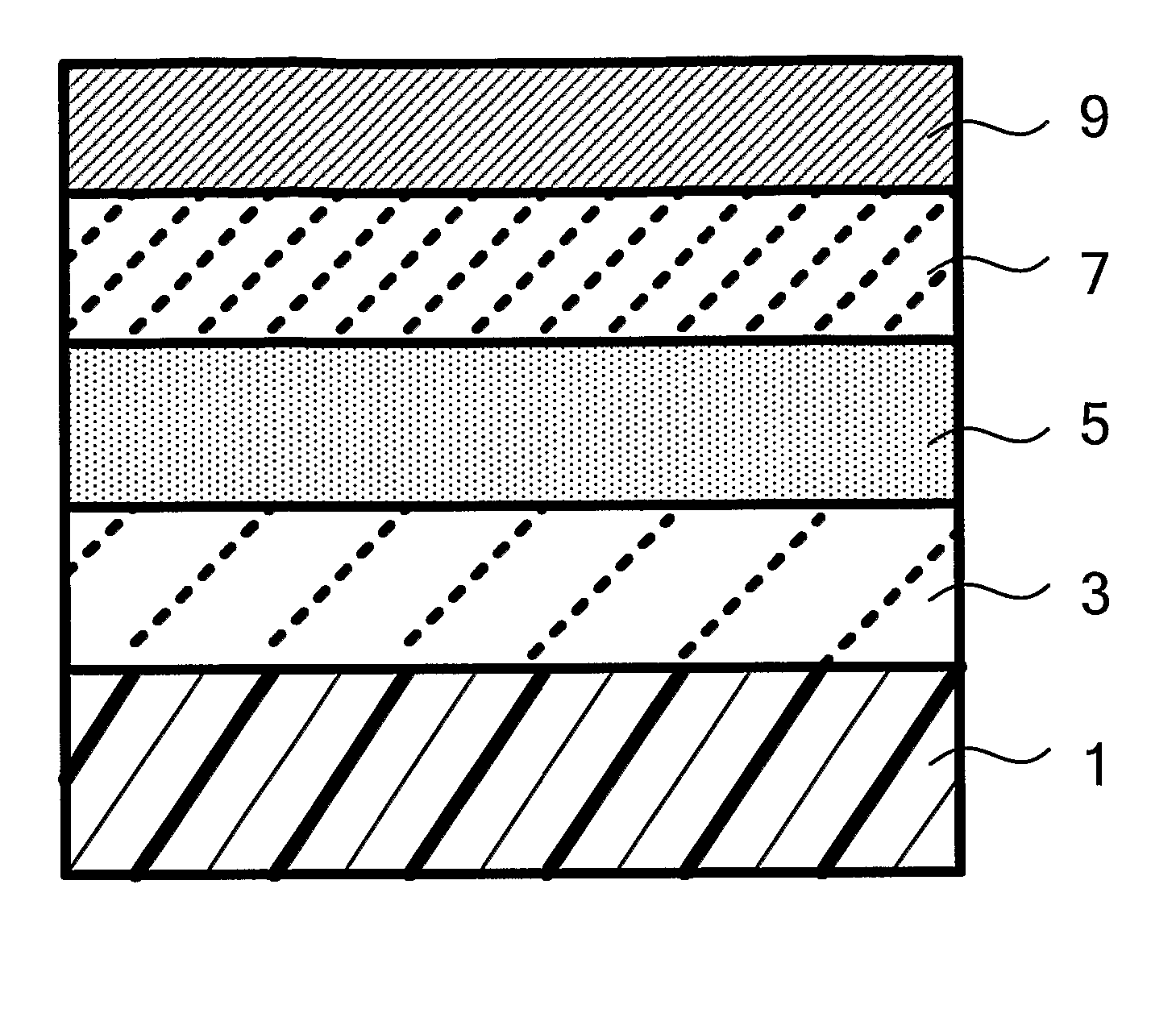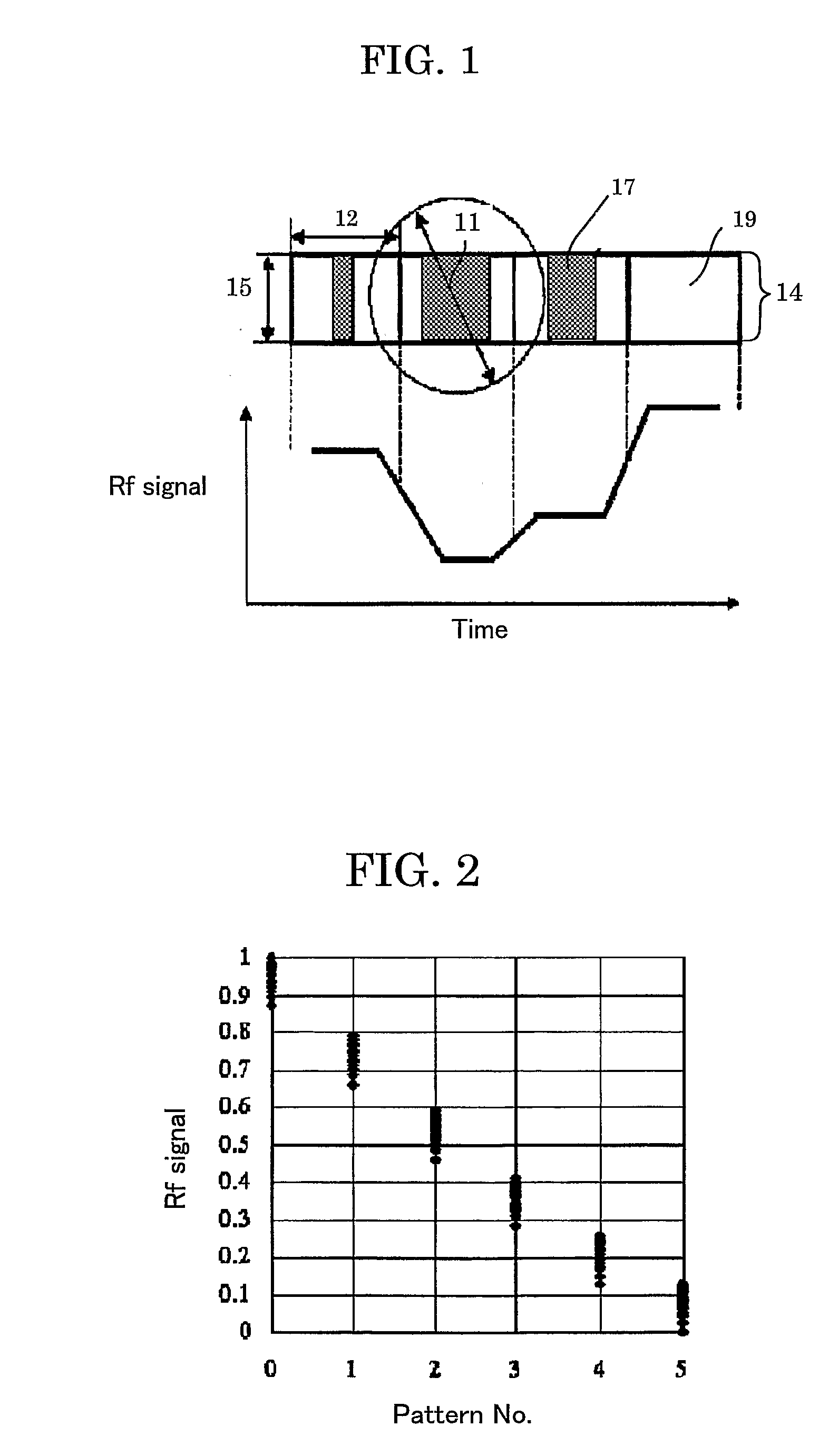Optical Recording Medium
- Summary
- Abstract
- Description
- Claims
- Application Information
AI Technical Summary
Benefits of technology
Problems solved by technology
Method used
Image
Examples
example
[0103] Hereafter, the present invention will be described in detail referring to specific examples; however, the present invention is not limited to the disclosed examples.
examples 1 to 3
[0104] On a low birefringence polycarbonate substrate having a thickness of 0.6 mm and a guide groove provided thereon, the guide groove having a groove depth of 21 nm, a groove width of 0.30 μm, and a groove pitch of 0.45 μm (ST3000, manufactured by TEIJIN-Bayer Polytec Ltd.), a first protective layer made from ZnSSiO2 (70:30 mol %) and has a thickness of 41 nm, a recording layer made from materials of each compositions shown in the columns of Examples 1 to 3 in Table 1 and has a thickness of 14 nm, a second protective layer made from ZnSSiO2 (80:20 mol %) and has a thickness of 6 nm, an anti-sulfuration layer made from Nb2O5:SiO2=80:20 (mol %) and has a thickness of 4 nm, and a reflective layer made from Ag99.5Bi0.5 (atomic %) and having a thickness of 140 nm were disposed in this order by sputtering.
[0105] Next, on the reflective layer, a ultraviolet curable resin having a thickness of 7 μm (SD318, manufactured by DAINIPPON INK AND CHEMICALS, INC.) was used to form an environmen...
examples 25 to 36
[0127] On a low birefringence polycarbonate substrate having a thickness of 1.1 mm and a guide groove provided thereon, the guide groove having a groove depth of 22 nm, a groove width of 0.20 μm, and a groove pitch of 0.32 μm (ST3000, manufactured by TEIJIN-Bayer Polytec Ltd.), a reflective layer made from Ag99.5Bi0.5 (atomic %) and having a thickness of 160 nm, an anti-sulfuration layer made from SiC and having a thickness of 3 nm, a second protective layer made from ZnSSiO2 (80:20 mol %) and having a thickness of 5 nm, a recording layer made from materials of each compositions shown in the columns of Examples 25 to 36 in Table 4 and having a thickness of 14 nm, and a first protective layer made from ZnSSiO2 (70:30 mol %) and having a thickness of 40 nm were disposed in this order by sputtering. On the first protective layer, a pressure sensitive adhesive sheet having a thickness of 75 μm was laminated using an ultraviolet curable resin having a thickness of 25 μm to prepare a ligh...
PUM
 Login to View More
Login to View More Abstract
Description
Claims
Application Information
 Login to View More
Login to View More - R&D
- Intellectual Property
- Life Sciences
- Materials
- Tech Scout
- Unparalleled Data Quality
- Higher Quality Content
- 60% Fewer Hallucinations
Browse by: Latest US Patents, China's latest patents, Technical Efficacy Thesaurus, Application Domain, Technology Topic, Popular Technical Reports.
© 2025 PatSnap. All rights reserved.Legal|Privacy policy|Modern Slavery Act Transparency Statement|Sitemap|About US| Contact US: help@patsnap.com



